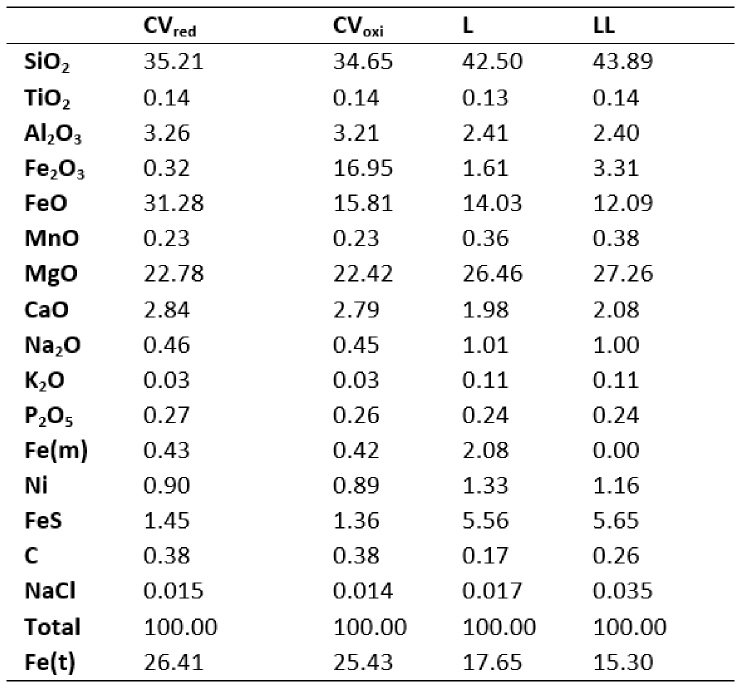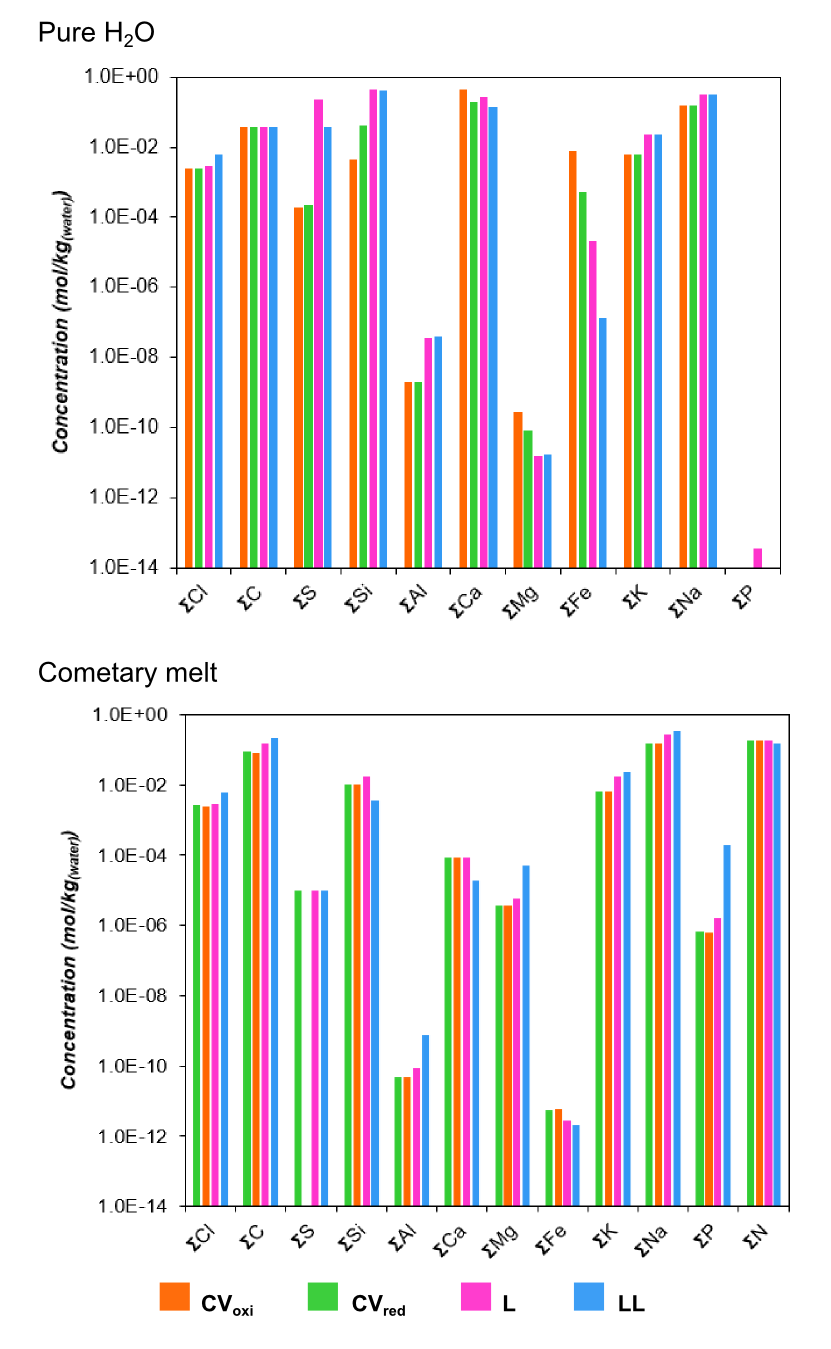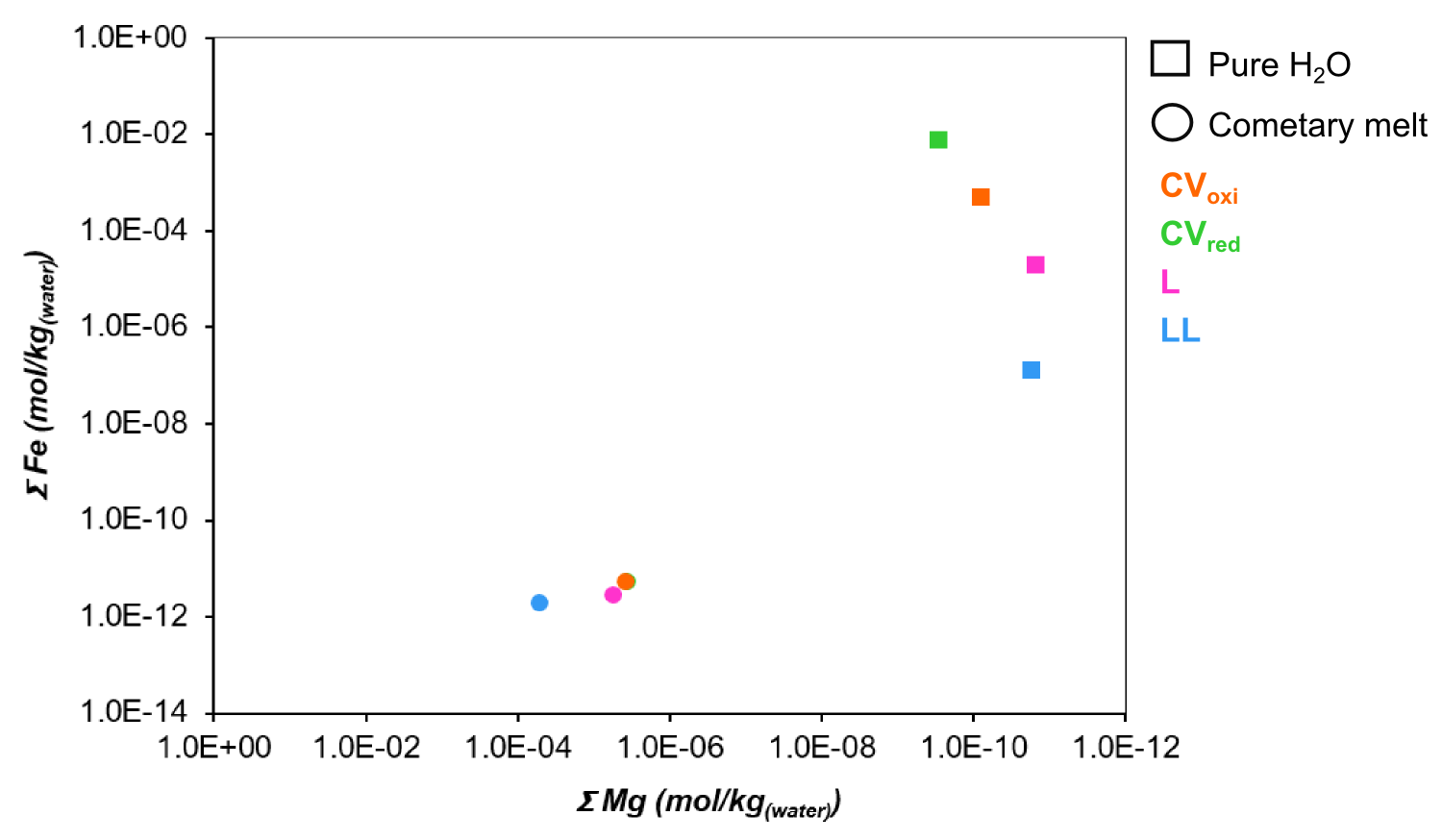Assessing the potential composition of Europa’s subsurface ocean from water-rock interactions.
- AstrobiologyOU, Faculty of Science, Technology, Engineering, and Mathematics, The Open University, Milton Keynes, United Kingdom (nisha.ramkissoon@open.ac.uk)
Introduction: Constraining the composition of Europa’s ocean is critical to understanding whether it could support microbial life, and provides an insight into the satellite’s evolution. However, there is much uncertainty about the ocean as it sits beneath a layer of ice and is thus not directly accessible for observation or to orbiting spacecraft. Salts on Europa’s surface, such as MgSO4 and NaCl, cannot be explained entirely by exogenous delivery, and so must originate from the ocean [1, 2] indicating that the ocean interacts with a silicate interior to liberate solutes [3]. If so, this means a “bottom-up” approach, that explores water-rock interactions occurring between the ocean and silicate interior, can be used to assess potential ocean compositions.
Previous studies have taken a similar approach [4–7] but have focused on silicate compositions based on carbonaceous chondrites. However, computer modelling has shown that a composition between a L and LL-type ordinary chondrites correlated with Europa’s moment of inertia, and therefore, could also be a candidate composition for Europa’s silicate interior [8]. Moreover, these previous studies have focused on water-rock interactions that use either pure H2O or HCl initial fluids [4–7, 9], derived from ices during Europa’s accretion. However, the europan surface shows evidence of cratering, with 90% of craters of cometary origin [10]. Comets could, therefore, have made a significant contribution to Europa’s water inventory and influenced the composition of the ocean, which warrants further investigation.
Methods: The computer code CHIM-XPT [11] was used to explore possible ocean compositions that could arise from water-rock interactions occurring within the europan interior. Four silicate compositions based on L, LL and CV (both oxidised and reduced endmembers) chondrites (Table 1) were reacted with two fluids: pure H2O and a cometary melt (based on the volatile composition of 67P/Churyumov-Gerasimenko [12]). These fluids represent plausible endmember compositions that may have contributed to the ocean water inventory. Initial models were run to mimic water-rock interactions occurring at an anticipated pressure and temperature of 250 MPa and 333.15 K [13]. These fluids were then cooled and depressurised to mimic the ascent of fluids from the interior to the ocean reservoir. Models were run at water-rock ratios (W/R) of 1-100 to reflect the degree of alteration experienced within the silicate interior [9, 14].
Table 1. Silicate compositions (based on data from [15]) used for models.

Results and Discussion: Here, results from models performed at a W/R of 1 are presented, which is reflective of the degree of alteration expected today for the europan silicate interior [9].
Variations in secondary mineral assemblages were produced from the initial fluid compositions. Pure H2O models were dominated by serpentine and greenalite for all four silicate compositions. Conversely, cometary models were dominated by talc, carbonates, serpentine, greenalite and chlorite. The high abundance of carbonates in cometary models reflect the high C content found in the initial fluid composition.
Overall, the evolved ocean compositions were dominated (concentrations > 10-3.mol.kg-1) by Cl, C, Si, K and Na regardless of initial fluid endmember compositions (Figure 1). Differences in ocean composition between the four silicate compositions was restricted to variations in Fe and/or S concentrations. The absolute concentrations of Fe and S were strongly influenced by initial silicate composition in the pure H2O models, leading to variations greater than one order of magnitude (Figure 1). Only S showed a variation of greater that one order of magnitude for cometary melt fluids, where all S was removed from the ocean for CVoxi by mineral precipitation.

Figure 1. Proposed ocean compositions from water-rock interactions and the ascent of fluids from depth.
Although the dominant elements were similar between pure H2O and cometary melt models, differences in the absolute concentration of Fe were observed (Figure 2). Fe concentrations were at least four orders of magnitude greater in pure H2O models than in cometary melt models. This is significant because the variation of Fe within the europan ocean could influence its ability to support life; Fe is a redox active element that is used by chemotrophic organisms for energy.
A variation of four orders of magnitude was also observed for Mg concentrations, with Mg greater in cometary melt models than in pure H2O models. Given the presence of Mg-salts within Europa’s icy crust, it is possible that the variation in concentration between the two initial fluids could be diagnostic of source fluids and be an indication that cometary ices may have made a significant contribution to Europa’s ocean.

Figure 2. Fe and Mg concentrations for pure H2O and cometary melt fluids and silicate compositions [15].
Conclusions: The modelling indicates that the initial fluid would have a stronger influence on the resultant europan ocean composition than proposed candidate silicate compositions. Hence, a wider range of candidate fluid compositions should be explored to assess their possible influence on the composition of Europa’s ocean.
Furthermore, results showed a variation in absolute Mg concentrations between both initial fluid compositions. If surface Mg-salts did form as the underlying ocean froze then this Mg variation could be used to identify the composition of the ocean. However, to fully understand the link between the ocean and salts in the ice shell requires further investigations into the salt precipitation sequence as potential ocean compositions freeze.
References: [1] McCord et al. (1998) Science, 1242. [2] Trumbo et al. (2019) Sci. Adv., 5. [3] Hand (2018) Halogens on and Within the Ocean Worlds of the Outer Solar System. [4] Zolotov & Mironenko (2007) Ices, Oceans, and Fire: Satellites of the Outer Solar System, Abstract# 6065. [5] Zolotov & Shock (2001) J. Geophys. Res. E Planets, 106. [6] Kargel et al. (2000) Icarus, 148. [7] Daswani et al. (2021) Geophys. Res. Let, 48. [8] Kuskov & Kronrod (2005) Icarus, 177. [9] Zolotov (2012) Icarus, 220. [10] Zahnle et al. (1998) Icarus, 136. [11] Reed (1982) Geochim. Cosmochim. Acta, 46. [12] Rubin et al. (2019) Mon. Not. R. Astron. Soc., 489. [13] Vance et al. (2007) Astrobiology, 7. [14] Spivack & Edmond (1987) Geochim. Cosmochim. Acta, 51. [15] Jarosewich (1990) Meteoritics, 25.
How to cite: Ramkissoon, N., Schwenzer, S., Fox-Powell, M., Del Moral, A., Olsson-Francis, K., and Pearson, V.: Assessing the potential composition of Europa’s subsurface ocean from water-rock interactions., Europlanet Science Congress 2022, Granada, Spain, 18–23 Sep 2022, EPSC2022-1167, https://doi.org/10.5194/epsc2022-1167, 2022.

